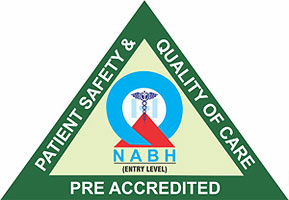+91-7291089674 (Bandra)
+91-7291092120 (Kandivali)




October 18, 2021 | Author: Admin
Laser Iridotomy is a medical procedure also described as Laser peripheral iridotomy (LPI). LPI is a first line of treatment for closed angle glaucoma. The angle of the anterior chamber of the eye is the space present between the clear part of the eye that is the cornea and colored part of eye, known as the iris. The angle is close to the meeting point of cornea and iris. The fluid out of the eye is directed out from the angle of the anterior chamber of the eye.
In closed angle glaucoma, the angle becomes narrow and closes and causes increase in intraocular pressure which leads to optic nerve damage. It may cause possible vision loss. The Intraocular pressure of the eye will increase suddenly or gradually.
LPI is a suitable and most preferred laser surgical procedure for treating angle closure glaucoma that develops due to pupillary block. The surgeon uses Argon laser or a YAG laser to do this procedure.
During this treatment, the surgeon creates an opening in the outer edge of the pupil to widen the angle of iris. It enhances the outflow of fluid from eye and that in turn prevents permanent vision loss or blindness. It decrease intraocular pressure to prevent optic nerve damage.
Laser iridotomy is a procedure to preserve the vision and prevent the occurrence or progression of glaucoma. LPI cannot improve the vision but it helps to prevent further vision loss due to glaucoma.
Laser iridotomy surgery is required when the angle is blocked in at least half of its area within the eye and the eye has high intraocular pressure or glaucoma. Doctor advises this surgery in some people with narrow angles as a prophylactic measure to prevent acute angle closure. Individuals with narrow angle have a high risk of acute angle closure. It is a preventive measure for vision loss or optic nerve damage. The procedure cannot be performed when the angle is completely closed or when the cornea has become opaque.
The procedure is performed in a laser room of hospital or eye clinic. The ophthalmologist uses anaesthetic eye drops before the surgery. The laser is responsible for making an opening to facilitate the free flow of aqueous humor (fluid within the eye) from the posterior chamber to the anterior chamber and decrease the intraocular pressure. It is a small procedure which usually takes 5 minutes. You will able to go home soon after the surgery and it is an outpatient procedure.
It is a rare condition. The rate of closure of iridotomy is between 1% in 2 weeks and 20% in first six months. The cause of closure of iridotomy is the accumulation of tissue debris at the site of procedure. The doctors may treat by performing another LPI at same site.
It is the most common complication and appears after 4 hours of the procedure. The IOP then settles with medication or on its own in a few days.
The condition refers to bleeding from the site of surgery. It is a minor condition and can be stopped after applying light pressure on the eye.
The risk of cataract may be there sometimes between 12 months to 6 years after the surgery.
Visual symptoms include blurring, shadows and lines after the procedure. The symptoms are uncommon. The reported rate of visual dyphotopsia is 2-16%. It can be avoided by performing the LPI in the superior portion of the iris.
Other complications include reduction in endothelial cells, postoperative inflammation and rare complications include retinal hemorrhages.
Most of the case studies show that the pain during and after the procedure is tolerable. The acute pain is not reported after the surgery but some possible risks can appear. The risks include bleeding at the site, inflammation and rise in eye pressure. Double vision or extra visual image are rare.
The success rate depends on the ability to open the angle, which varies due to different condition of patients. The study shows that 65 %-76 % cases are successful. Some patients need further laser surgery or other treatment options.
Laser Iridotomy is a surgical procedure for the management of glaucoma. The patients may experience blurred vision after the procedure for short duration of time. The other complications with this procedure are bleeding risk, cataract risk, and risk of increase in intraocular pressure. You may contact the doctor if you experienced blurry vision within a day or if you feel any discomfort after surgery. It is necessary to take medicines prescribed by the doctor on time and follow all the instructions.